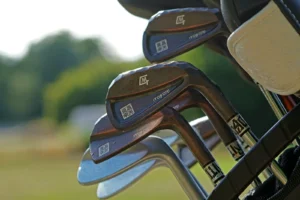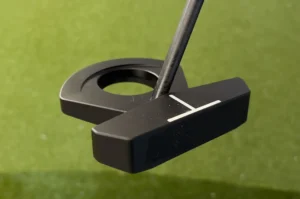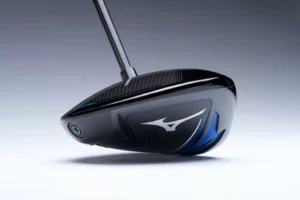The game of golf is in the midst of a heated debate around a proposed “rollback” by the sport’s governing bodies that would set new standards to limit the distance golf balls can travel. The United States Golf Association (USGA) and the R&A, golf’s two global ruling authorities, are aiming to curtain the rapid advances in golf ball technology that have led to increasing distances among elite golfers. However, many PGA Tour players and golf equipment manufacturers oppose the potential equipment regulation, arguing it could negatively impact professional competitions and recreational play.
Introduction to the Proposed Golf Ball Rollback
In February 2022, the USGA and R&A announced plans to update the overall testing standards for golf balls. The proposed changes would place limits on golf ball distance, targeting reductions for elite golfers while still allowing some innovations that appeal to recreational players. This marks one component of the ruling bodies’ broader efforts to rein in distances and curtail any advantages among top athletes.

Specifically, the updated protocols would measure driver launch conditions more precisely, while also lowering the maximum allowed ball speed and spin rate. The goal is to achieve an estimated distance reduction of approximately 10% when new prototype balls are tested. The governing groups suggest this established framework could take full effect for elite tournaments in 2026, allowing time for additional feedback.
“We have taken time to consult fully with the golf industry, including players, the main tours and equipment manufacturers, and have considered their feedback carefully,” said the R&A’s Executive Director of Championships, Duncan Weir.
However, the proposal remains highly controversial. The PGA Tour issued a statement opposing any significant changes to equipment rules, instead favoring improvements to golf course setups. Golf ball manufacturers also argue altering standards will drive substantial R&D costs that hurt innovation and their businesses.
Let’s explore this divisive proposed rollback in more detail, examining key perspectives and potential impacts across golf’s elite competitions, recreational play, and the broader golf industry.
Key Technical Details on the Rollback Changes
The USGA and R&A have determined that golf ball distances have consistently increased over time, stemming largely from advances in ball designs and clubface technologies. They argue this upward trend threatens to undermine golf’s core challenge of mastering shot-making skills and course management strategies.
“We believe the proposed changes will provide the necessary safeguards against an undesirable continuing cycle of increasing hitting distances and golf course lengths,” noted USGA CEO Mike Whan.
The updated protocols aim to better replicate real-world launch conditions using robotic testing. The methodology will lower the allowed values for ball speed and backspin that determine overall distance capability.
Specifically, the new standards would:
- Tighten ball speed values from a current limit of 209 mph down to 200 mph under test conditions.
- Reduce maximum spin rate allowed from 3,500 RPM down to 2,900 RPM.
- Adjust launch conditions like angle and sidespin to match typical elite impacts more closely.
In simulations by the ruling bodies, these changes led to approximately 10% less distance across tour-level swing and launch metrics. So an elite 300-yard drive would decrease to roughly 270 yards under the new protocols.
The USGA and R&A believe curbing these distance extremes at the top level will better serve the sport’s long-term sustainability without excessively impeding recreational play. New balls can continue innovating features like soft feel and spin control that appeal to amateur golfers.
PGA Tour Opposition and Rationale
The PGA Tour, which oversees professional golf’s top competitions, expressed opposition when the proposal was first unveiled. In an official response, the PGA Tour cited concerns around “bifurcation” – having different equipment rules for elite and recreational play:
“We believe the current standards achieved by the USGA and R&A effectively govern fair competition. Given other priorities facing the game, the PGA TOUR does not believe the USGA and R&A have made a convincing case for the proposed changes, particularly given the potential for significant, unintended consequences.”
A key rationale behind the PGA Tour’s stance relates to the unique logistical factors in professional tournaments. Golf ball Types already differ between the PGA Tour and other USGA events – like The Masters using a special ball each year. Further variance risks complicating sponsor deals and retail sales. Different swing speeds between athletes also affect how any changes influence competition.
Altered equipment regulations could also force shot adjustments that undermine the PGA Tour’s strong product. As five-time major champion Phil Mickelson explained, “changing the equipment rules has damaging effects…altering the challenges tour players face and undermining their feats.”

While the PGA Tour recognizes the need to address sustainability factors, they argue evolution of golf course setups provides a preferable solution over equipment rollbacks. Their statement concluded that bifurcation “should only be considered when all other options have been exhausted.”
Various Perspectives Across Golf
The golf ball rollback concept has prompted extensive debate across the sport’s ecosystem. Let’s examine some of the key viewpoints voiced by governing officials, elite golfers, and golf equipment manufacturers.
Governing Bodies’ Rationale
The USGA and R&A emphasize sustainability as the driving force behind reassessing distance standards. Excess gains by top athletes threaten to push course lengths beyond manageable limits.
When the previous distance measurement changes were enacted in 2004, the ruling bodies did not anticipate that balls would reach the current extremes in speed and spin. As USGA CEO Mike Whan stated:
“We don’t think this is the end-all, be-all solution. But we think it’s one part of the solution that’s necessary. We’re not trying to ruin the game the players know and love – we’re trying to keep it relevant.”
They want to avoid a future where elite events require impractical 8,000+ yard courses. Steve Otto, the USGA’s senior director for research and testing, suggested even recreational golf sees impacts:
“When you push back tees, now the shot values begin to change. Push them back far enough, now your drive is just in the middle of the fairway every time. The value of that heroic second shot starts to disappear.”
Overall, the ruling bodies feel urgent action is required to curb distance inflation and protect golf’s traditions. The standards aim to thread the needle – reigning in gains by the top athletes most dramatically reshaping the sport while minimizing disruption to the broader golf community.
Elite Golfers Voice Mixed Opinions
Reactions from pro golfers run the gamut regarding potential distance rollback. Some agree action is warranted but want nuanced approaches beyond equipment. Others defend the amazing athletic feats equipment innovations have enabled.
Four-time major winner Rory McIlroy acknowledged that distance has changed courses and become “out of control.” However, he believes any solution should focus more on dialing back driving distances by restricting player-specific parameters (launch angles, spin rates, etc).
Six-time major champ Nick Faldo argues rolling back the ball could benefit tournaments and make setups more varied:
“We’ve lost a lot of dynamics of the game because it’s just bombed it down there, wedged it on…If we roll the ball back, hanging on to par becomes tough again.”
In contrast, world #2 Jon Rahm opposes significant ball changes given how much athletes train optimizing launch conditions, stating:
“To make a change where distance is going to be a problem and go down, it’s almost unfair.”
Bryson DeChambeau, one of golf’s longest hitters, believes innovating equipment and maximizing athletic potential represents progress:
“Changing equipment regulations now just makes the game more boring. Part of the allure is watching elite golfers push boundaries through technology and training.”
There is no consensus, but many golfers feel that more drastic equipment rollbacks should be a last resort after exploring course setup options.
Golf Ball Manufacturers Express Strong Concerns
Golf ball manufacturers staunchly oppose the proposed new protocols as an excessive burden that will hamper innovation and raise costs.
Acushnet, maker of Titleist balls and a 38% US market share, argues the changes could cost $50 million in R&D outlays and equipment adjustments. They believe regulating competition factors like driving distance should instead happen through course setups.
TaylorMade Golf holds 25% of the golf ball market share. Their parent company Adidas expressed worries about undermining athlete performance and consumer appeal. Significant R&D costs incurred to develop conforming new balls could lead to higher retail pricing as well.
Manufacturers also note the difficulty rolling back technology like dimple designs that inherently boost aerodynamic efficiency. Srixon’s President Alex Boezeman questioned whether changes targeting 10% distance drops were even feasible:
“The only way to get there is to break the rules…remove dimple patterns or make the ball solid like a baseball.”
Callaway Golf, which owns a roughly 15% market share, believes innovation better serves golfers:
“If you look at advances over the past 15-20 years, most have made the game more fun and accessible without being disruptive,” said Callaway Senior Vice President Glenn Hickey.
The golf ball manufacturing sector sees the rollback as an excessive measure with major commercial consequences. They advocate optimizing course setups and other solutions as preferable alternatives.
Potential Impacts on Elite Play and Recreational Golf
If implemented in its current proposed form, the golf ball rollback could have profound impacts for both elite golfers competing week-to-week and amateur players enjoying the sport recreationally.
For elite competitions, dialing back ball distance capacities could significantly alter winning scores. With shorter drives, players would face longer approach shots, demanding greater iron shot precision. Driving accuracy could become vital again on lengthy holes. Events may see more varied winners as bombing tee shots becomes less advantageous.
However, some athletes and analysts argue the proposal’s ~10 yard rollback impact seems insufficient to dramatically reshape tournaments. Further bifurcation concerns also linger regarding keeping the professional game aligned with equipment recreational golfers buy.
For average amateur players, the new protocols aim to maintain the status quo as much as possible. Governing officials stress that golf ball manufacturers can continue incrementally optimizing things like soft feel and spin control to satisfy recreational demand. So in theory, amateur drive distances should remain consistent.
But skepticism exists around exactly how much innovation leeway golf ball makers will retain under the new model. If manufacturers must invest heavily in redesigning and testing balls to conform with lower distance limits, those costs could ultimately trickle down to consumers through higher retail pricing.
Status and Next Steps
The ruling bodies plan








